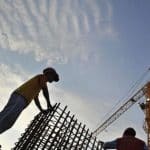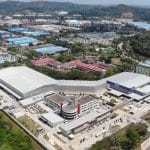Heavy equipment accidents are an integral part of the mining, construction, and energy industries. Every day, risks such as rollovers, fires, sinkings, or damage due to mechanical failure can occur.
When major losses occur, insurance can be a financial lifeline for companies. However, claims payments are often delayed—or even denied—not because the insurance company refuses to pay, but because the claims process was not properly followed.
This article discusses the important steps in the heavy equipment insurance claims process, common mistakes that are often made, and how insurance brokers play a vital role in ensuring claims are processed quickly, accurately, and completely.
1. Commonly Claimed Types of Heavy Equipment Insurance
Before understanding the claims procedure, it is important to know the types of protection that apply to heavy equipment:
- Contractor’s Plant and Machinery (CPM) Insurance – protects heavy equipment from physical damage due to accidents, collisions, overturning, fire, or sinking.
- Machinery Breakdown Insurance – covers mechanical damage due to internal machine failure.
- Public Liability Insurance – protects against third-party claims resulting from heavy equipment accidents in the field.
- Marine Transit Insurance – protects heavy equipment during shipping or mobilization between project locations.
Each type of insurance has different claim requirements. This is where mistakes often occur if companies don’t understand the details of the policy wording.
2. Stages of Heavy Equipment Insurance Claim Procedures
The correct claims procedure will determine whether a claim is accepted or rejected. Generally, the process consists of eight main steps:
Step 1 – Report the Incident Immediately
As soon as an accident occurs, a claim report must be filed immediately. Ideally, within 24 hours of the incident, either through a broker or directly with the insurance company.
The report must contain:
- Chronology of events (date, time, location, cause).
- Tool type and serial number.
- Photos of the damage and location situation.
Late reporting is often the main reason for claim rejection.
Step 2 – Secure Location and Evidence
After the report is filed, secure the area to prevent further damage. Do not move the equipment until instructed by the insurance company or loss adjuster, unless for safety reasons.
Visual documentation is essential — take photos from multiple angles and note the identity of any witnesses or operators.
Step 3 – Initial Inspection by Broker or Surveyor
Insurance brokers such as L&G Insurance Broker will usually immediately assign an internal team or coordinate with an insurance surveyor to conduct an initial inspection at the scene.
This stage ensures that the report is in accordance with the factual conditions in the field and minimizes data differences between the insured and the insurance.
Step 4 – Completing the Claim Form and Supporting Documents
The insured is required to fill out the Claim Form and attach documents such as:
- Insurance policy and schedule.
- Chronology report and photos of the damage.
- Equipment purchase invoice (for value verification).
- Estimated repair costs from authorized workshops.
- Police report (in case of fire, theft, or serious accident).
Brokers help prepare all these documents so that they are complete and meet insurance company standards.
Step 5 – Investigation by Loss Adjuster
Insurance companies appoint loss adjusters, namely independent experts who assess the cause and extent of losses.
The loss adjuster will assess whether the incident meets the policy requirements (i.e. does not violate any exclusions) and determine the amount of compensation.
Insurance brokers play an active role in this process, explaining the actual conditions on the ground, and ensuring that the interpretation of policy wording does not harm the insured.
Step 6 – Evaluation and Negotiation Process
The results of the loss adjuster’s investigation then become the basis for the insurance company to determine the compensation value.
There are often differences in interpretation between the insured and the insurance regarding the amount of the claim.
This is where the broker’s role becomes vital: providing clarification, comparing technical findings, and negotiating so that the insured receives fair and contractual payment.
Step 7 – Claim Approval
If all documents are complete and the investigation results are appropriate, the insurance company will issue a Claim Approval Letter.
After that, the payment process can be made to the insured’s account or repair workshop (if done through the repair basis system).
The broker ensures that this process runs quickly and is not delayed due to administrative reasons.
Step 8 – Claim Payment and Final Evaluation
After a claim is paid, the broker and insured typically conduct a final evaluation to improve the reporting system, increase coverage, or update the policy wording to prevent a similar incident from recurring.
3. Common Mistakes That Often Occur
Many heavy equipment insurance claims are delayed or denied due to simple things, such as:
- Reporting is more than 7 days late.
- Damage photos are incomplete.
- The equipment was repaired before the survey was conducted.
- There is no proof of ownership of the tool.
- The policy wording does not cover the type of risk that occurred.
With the help of an experienced insurance broker, these mistakes can be avoided from the start.
4. The Strategic Role of Insurance Brokers in Claims
Brokers are not just administrative liaisons, but also technical advisors and professional negotiators in every claim.
The broker’s main roles in the claims process include:
- Assist clients in creating accurate claims reports and documents.
- Accompanying field investigations with loss adjusters.
- Explain to the insurance company that the incident is included in the risks covered.
- Monitor the process until the claim is paid in full.
- In many cases, the broker’s role determines whether the claim will succeed or fail.
5. L&G Insurance Broker’s Track Record in Heavy Equipment Claims
As a specialist heavy equipment and mining insurance broker, L&G has extensive experience handling hundreds of high-value claims across Indonesia.
Some important achievements:
- Claim for heavy equipment sunk in Kalimantan worth Rp17 billion — paid in full.
- Total loss claim for dump truck due to fire worth over USD 1 million — settled without dispute.
- Hundreds of other partial claims, including mechanical breakdowns and operational accidents, were resolved professionally and quickly.
This success is inseparable from L&G’s technical mastery of heavy equipment, documentation capabilities, and strong relationships with national and international insurance companies.
- Why Handling Claims Through a Broker is Safer
Handling a claim yourself may seem quicker at first, but without expert assistance, the risk of misinterpretation is very high.
Authorized insurance brokers like L&G operate under the supervision of the Financial Services Authority (OJK), ensuring integrity and professionalism at every stage of the claims process.
With brokers:
- Claims are accompanied from the start.
- The process is transparent and efficient.
- Payment is received according to the value of the loss.
Conclusion
Heavy equipment insurance claims are not just an administrative process — they are a true test of the effectiveness of a company’s coverage.
Proper procedures, complete documents, and professional assistance will determine the success of the claim.
As a trusted insurance broker in the heavy equipment industry,
L&G Insurance Broker is ready to help your company:
- Prepare a strong claim document,
- Overseeing investigations and negotiations,
- And ensure payments are received in full and on time.
With long experience and a proven reputation, L&G is not just a connector, but a strategic partner in protecting your heavy equipment assets and business continuity.
—
DON’T WASTE YOUR TIME AND SECURE YOUR FINANCIAL AND BUSINESS WITH THE RIGHT INSURANCE.
HOTLINE L&G 24 JAM: 0811-8507-773(CALL – WHATSAPP – SMS)
Website: lngrisk.co.id
Email: halo@lngrisk.co.id
—















